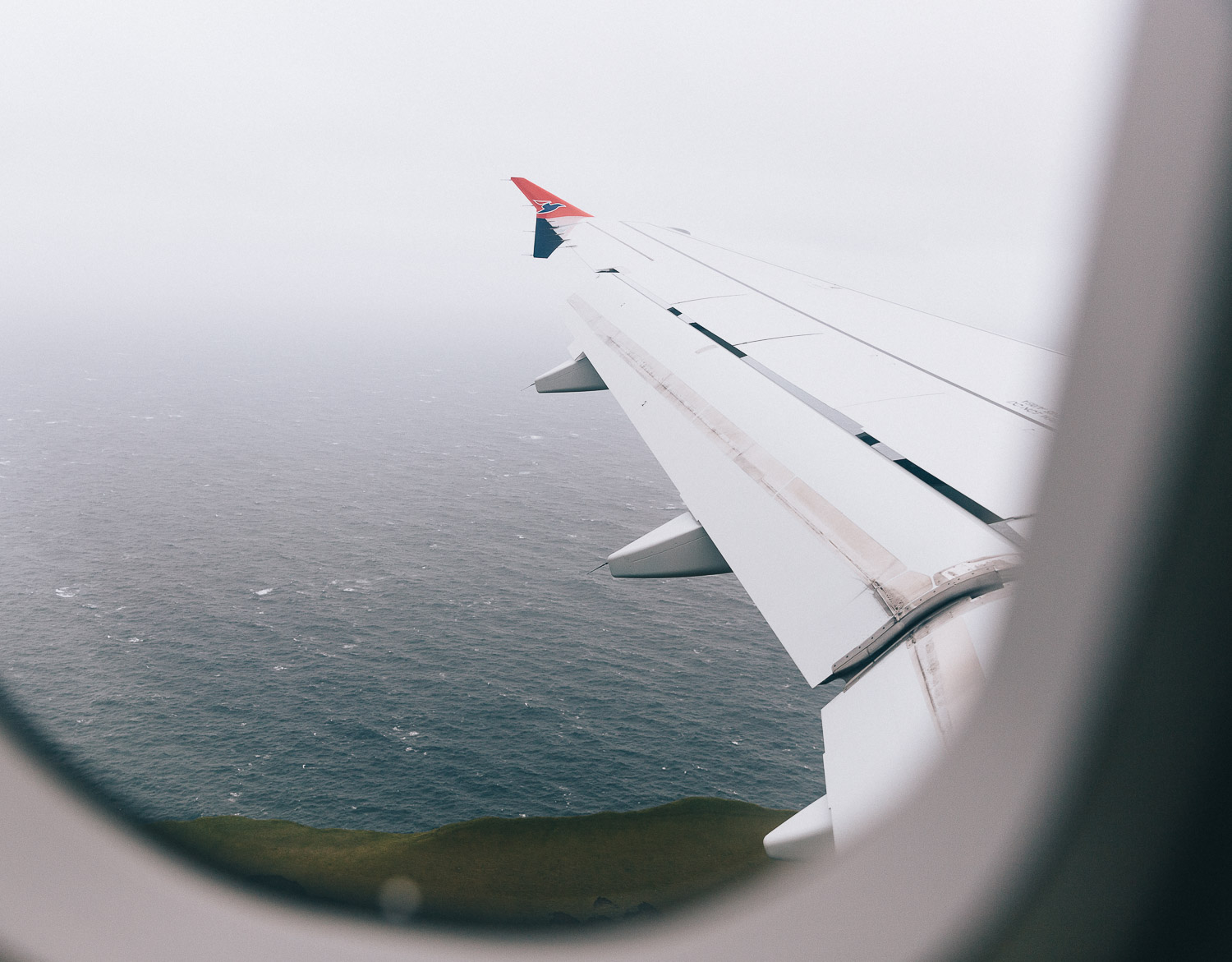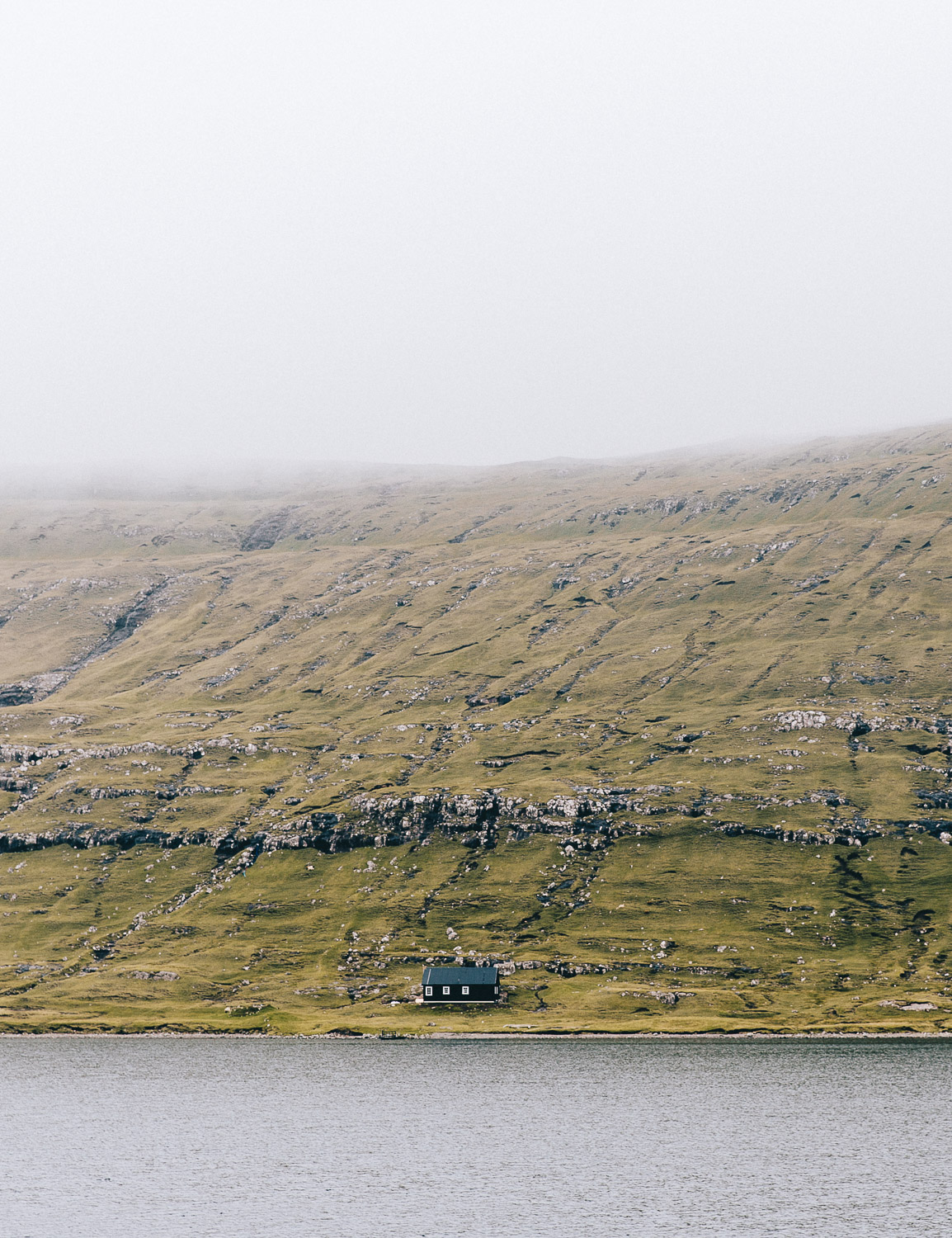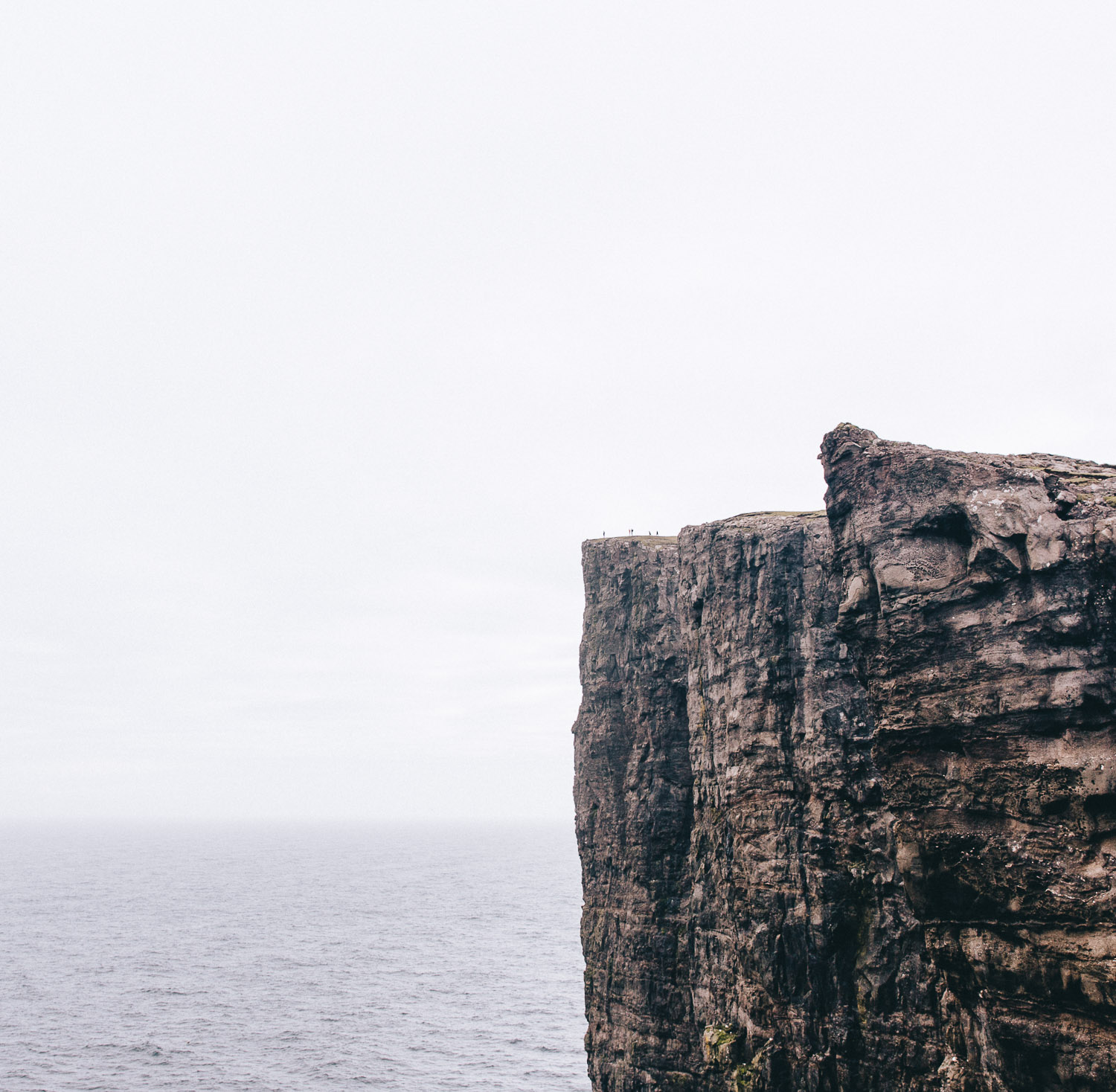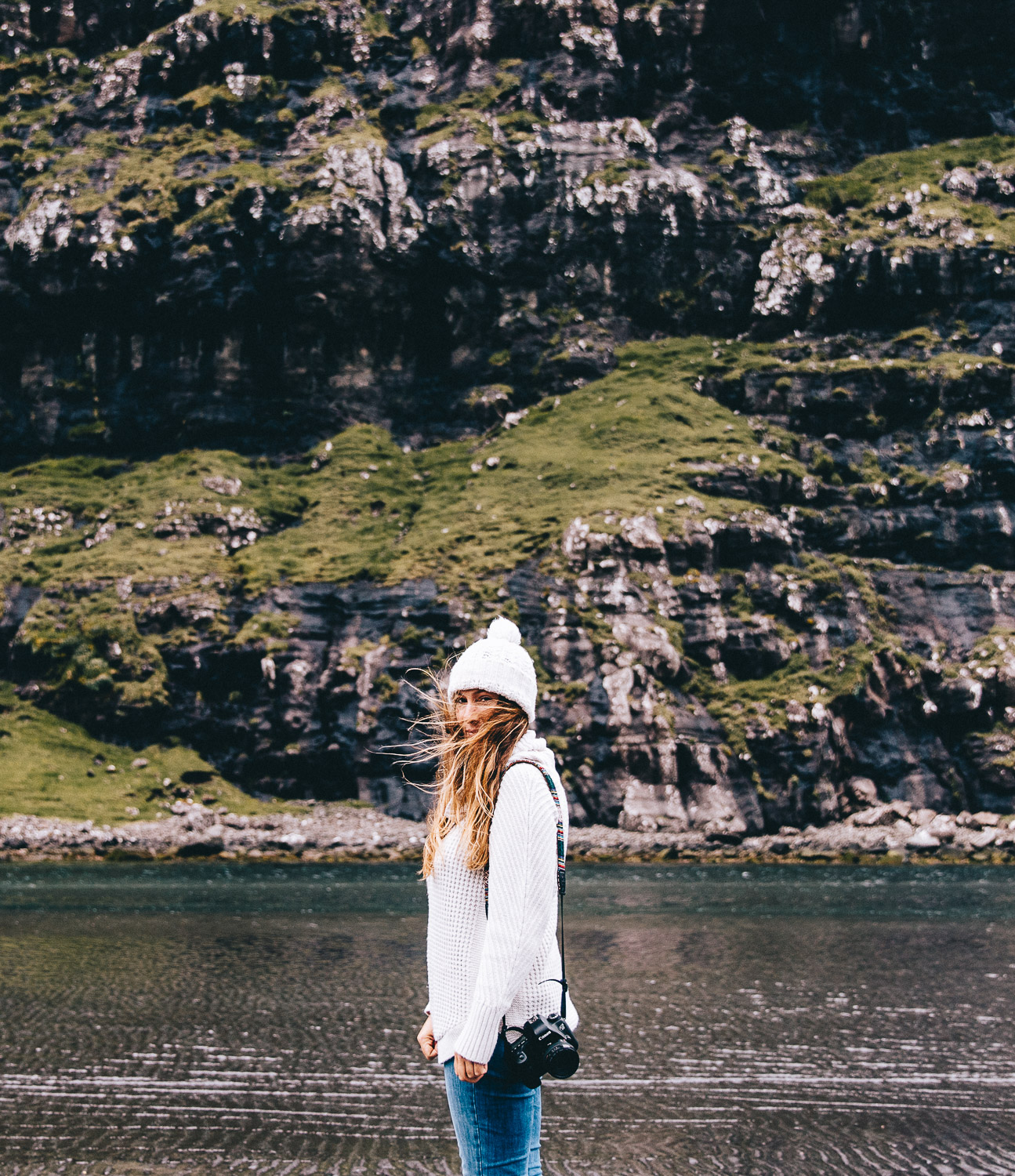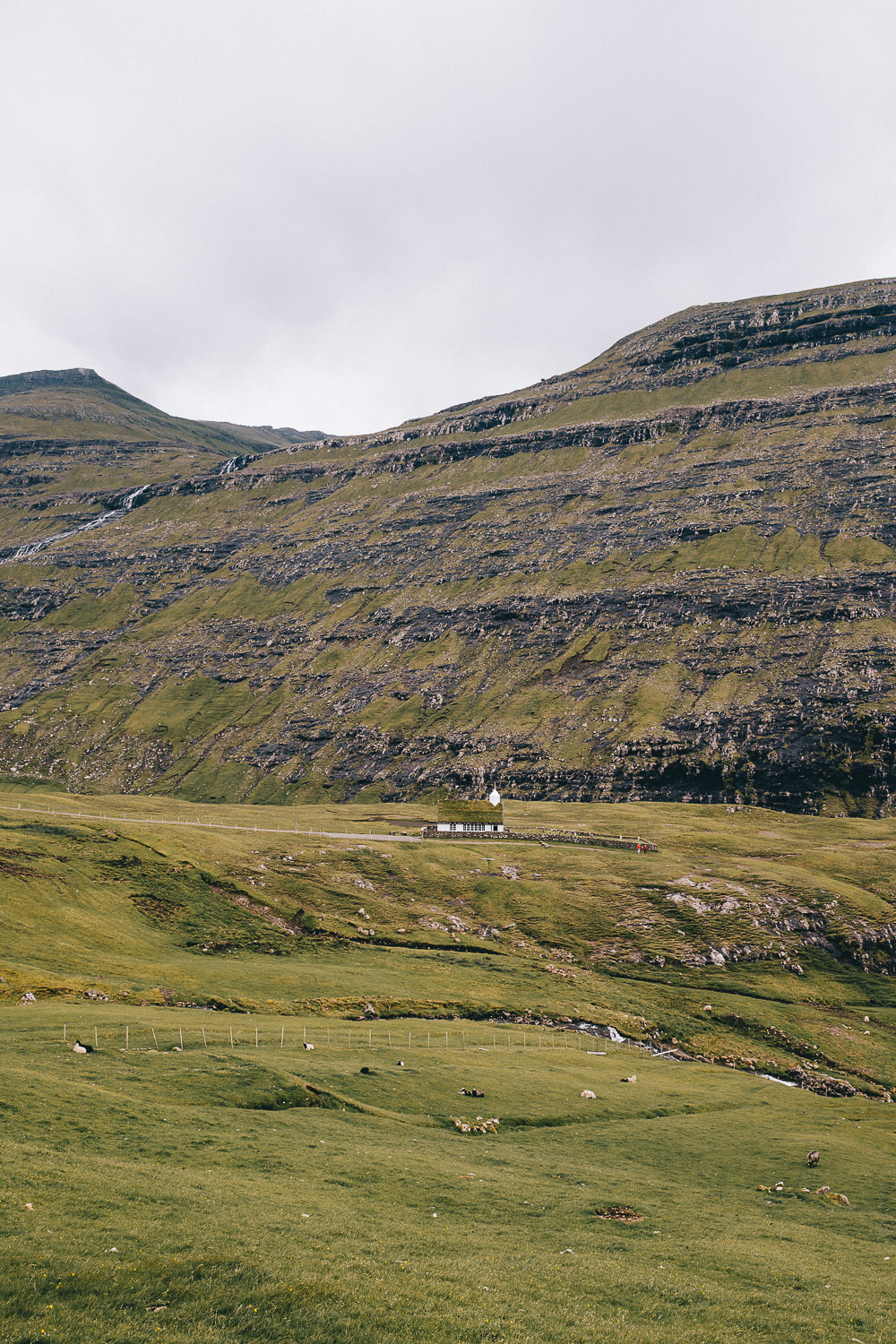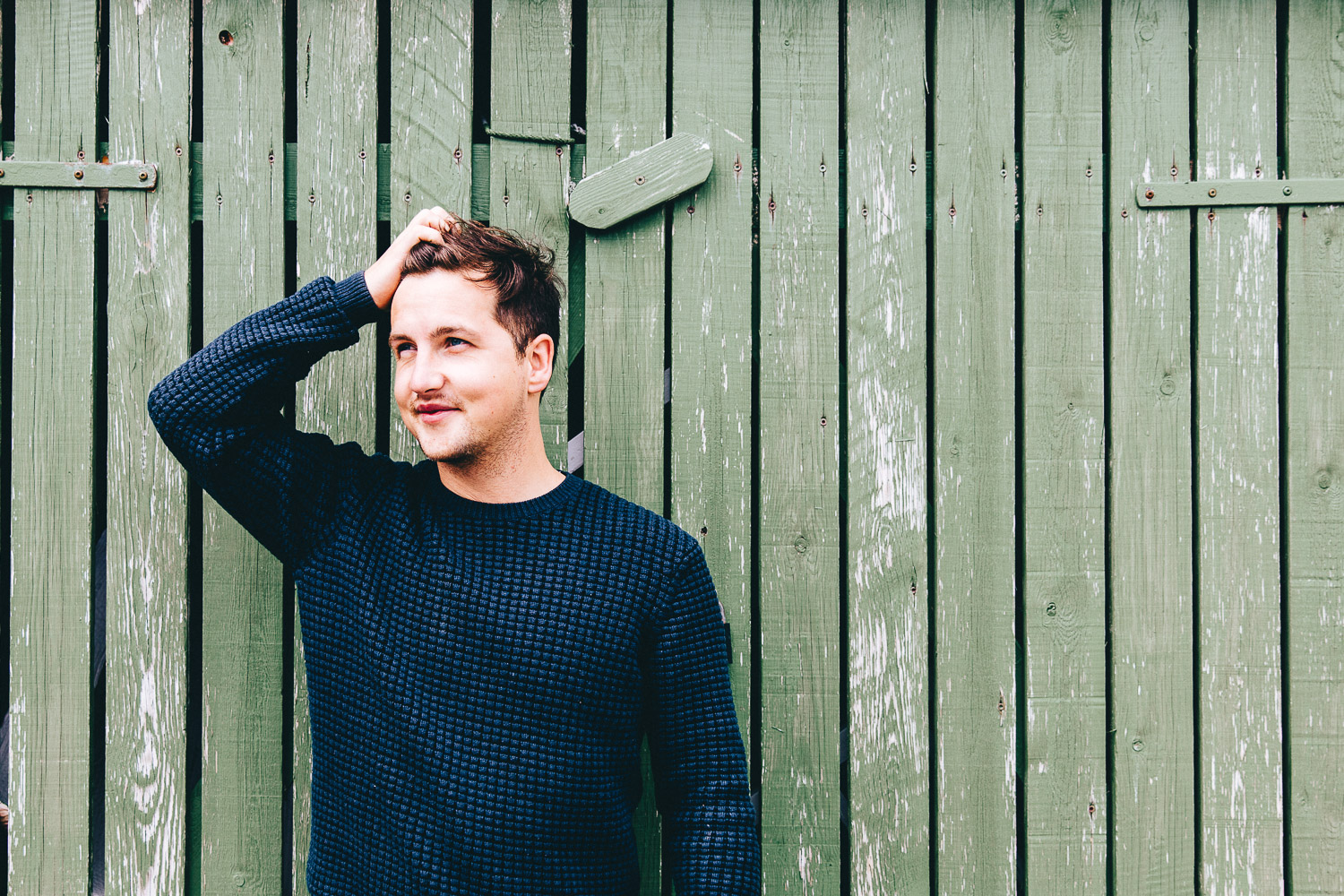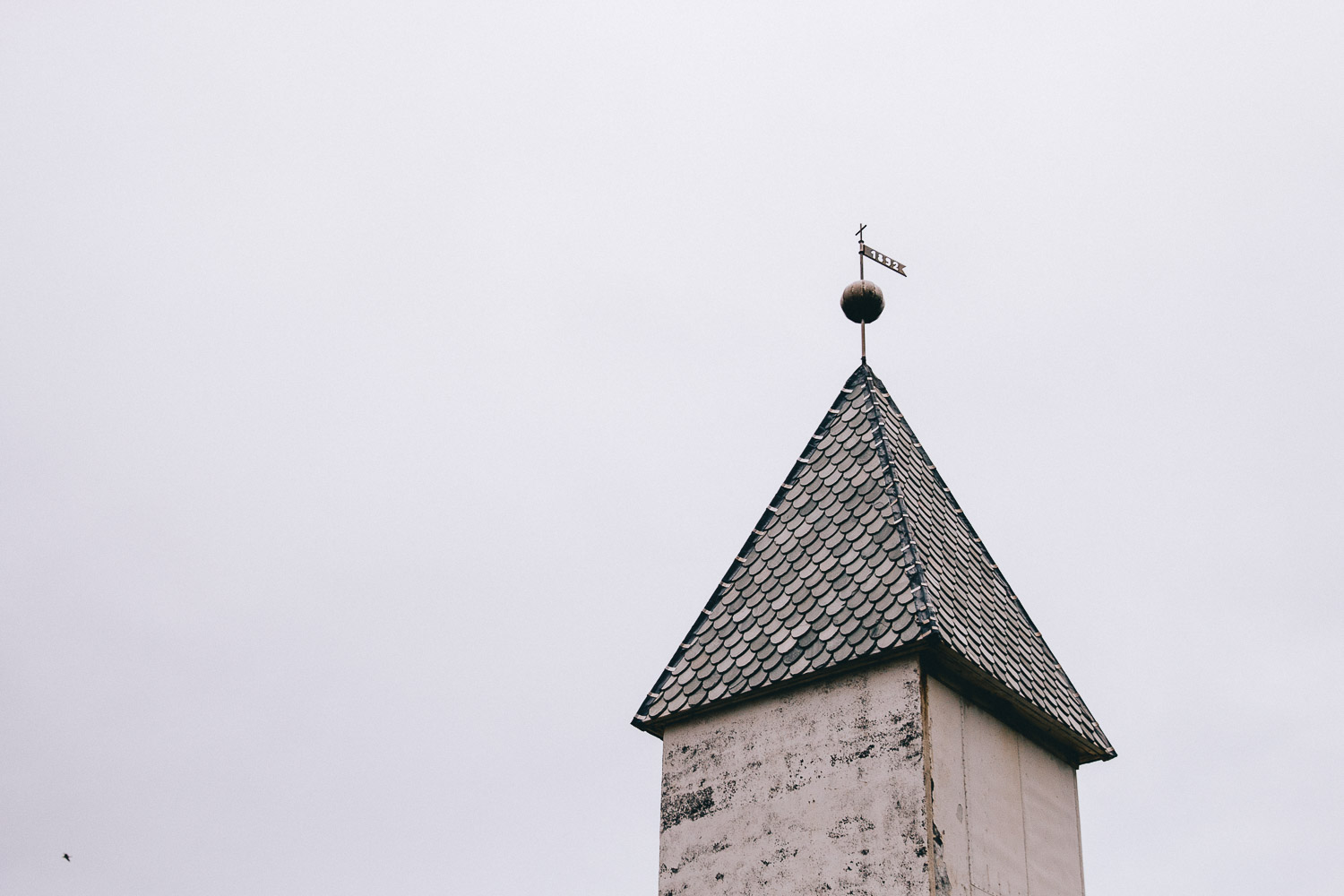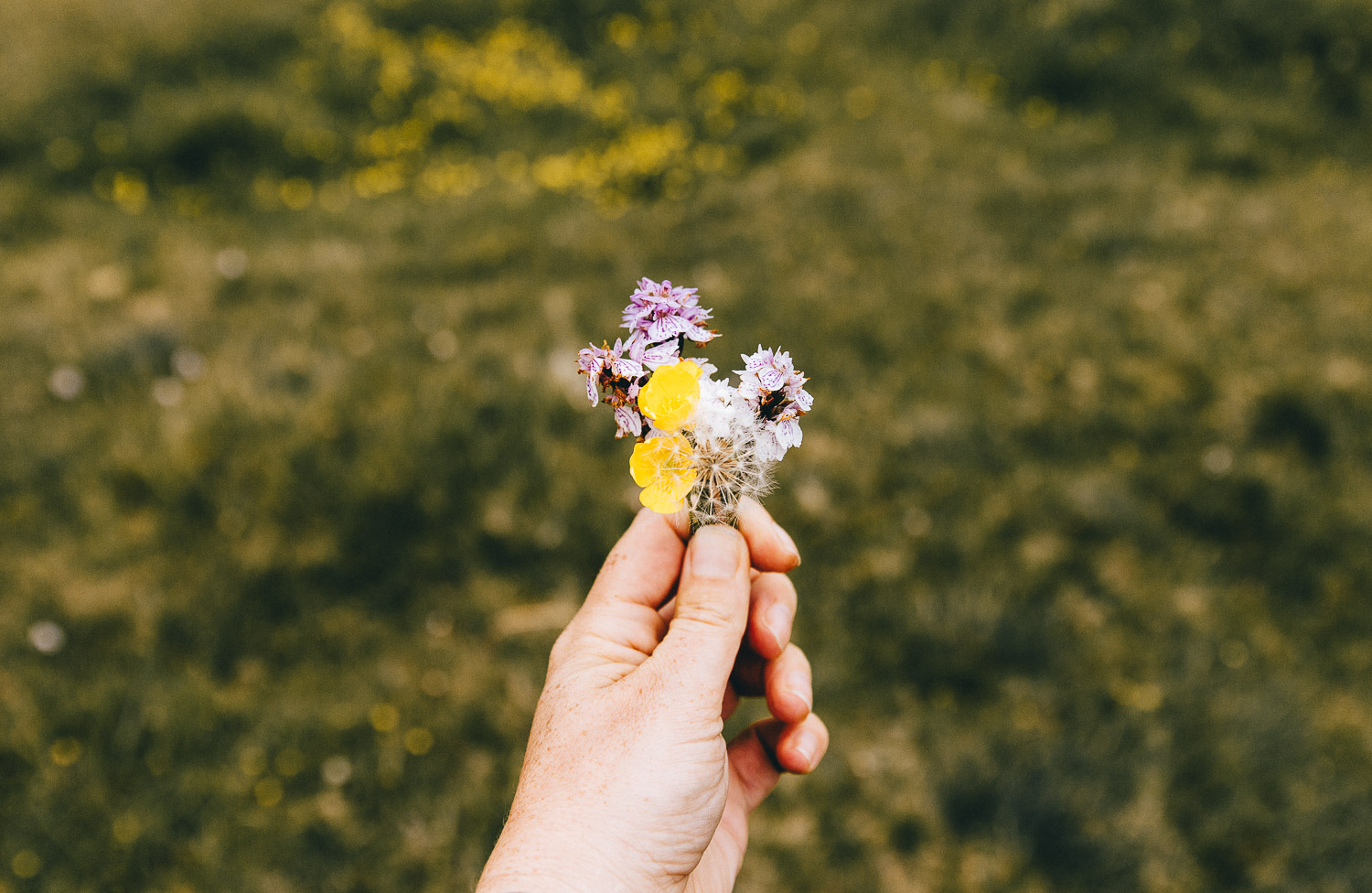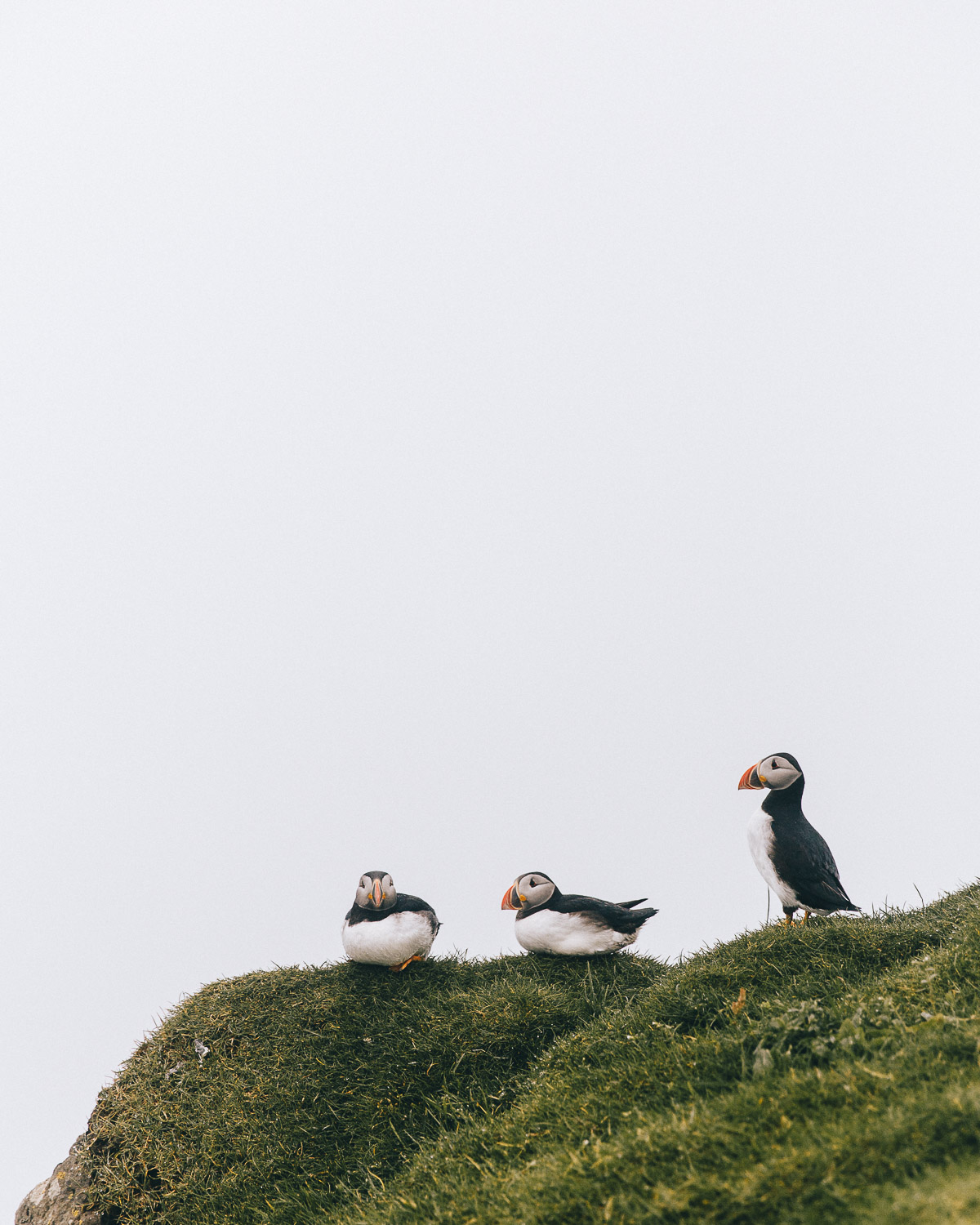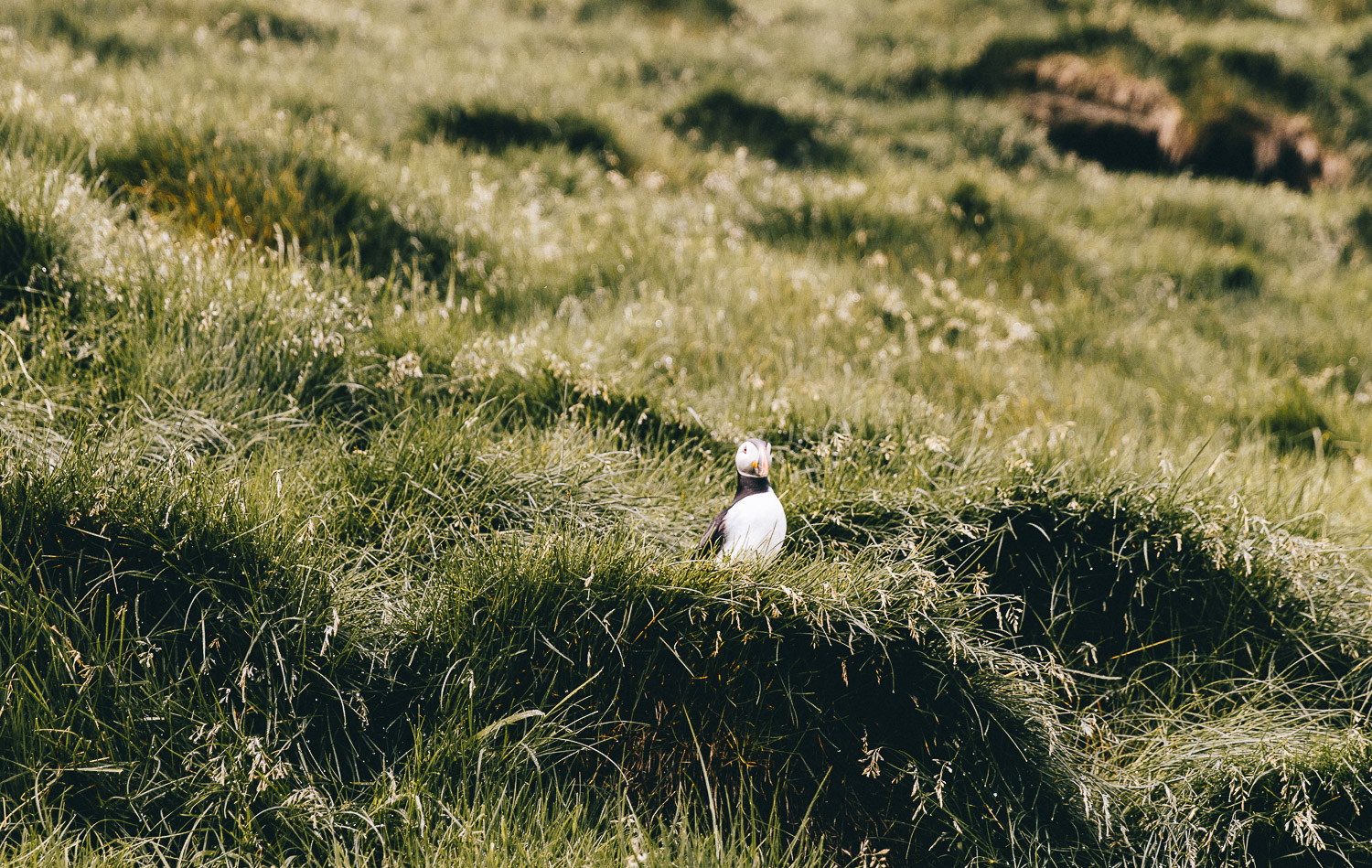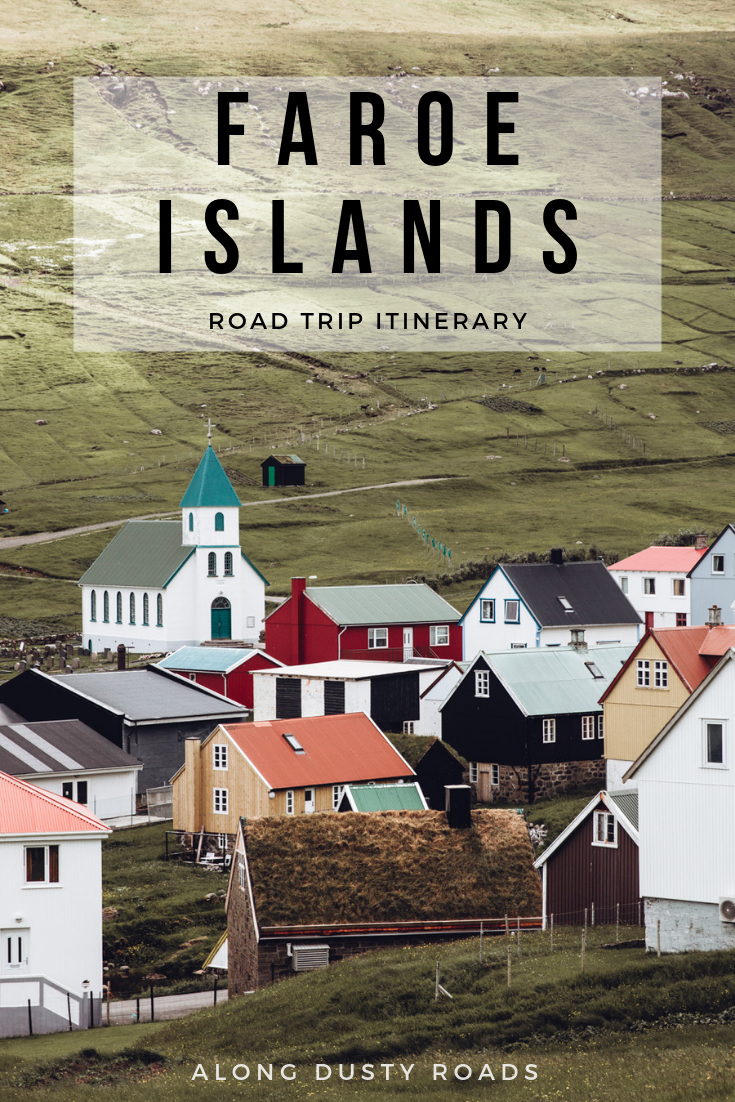The Faroe Islands.
A small cluster of islands in the Atlantic Sea, for years largely ignored by international tourists, has burst on to the global stage; it’s magical landscapes quickly making it the next place to go for those that feel Iceland has gone too far.
We recently spent seven wonderful summer days on road trip criss-crossing the Faroes and in this post, we’re sharing our own one week Faroe Islands itinerary (with a day-by-day breakdown), alongside our advice on how best to experience the islands, recommendations on where to stay, plus potential additions or tweaks to the itinerary we would recommend to help future visitors to plan the very best Faroe Islands road trip!
Is a Road Trip The Best Option For Exploring the Faroe Islands?
In short, 100% yes!
Over seven nights and eight days, we drove along winding single-track roads, through dark tunnels blasted into rock or under the sea, past many many sheep, towards gorgeous little villages, on dramatic blind hairpins, and always with an epic Faroese view just ahead of us or in the rear-view mirror - we absolutely loved it.
Indeed, much to our surprise (and likely others), The Faroe Islands are uniquely well set-up for a road trip and the perfect destination for an adventure by car. The main islands are incredibly well-connected by a series of tunnels and bridges, the road conditions are pretty great, and the distances each day are manageable (with a drive time of only two hours from east to west).
Additionally, having your own rental car also allows you to venture towards some of the most remote spots within a destination which is already, well, pretty remote.
An important thing to be aware however - as we outlined in our ‘Faroe Islands Travel Budget’ post - is that a road trip here ain’t cheap, with one week’s car rental averaging out at £500+ ($650 / €565) before fuel costs. In fact, the it’s important to note at the outset - before you get your heart set on visiting - that the Islands really aren’t a destination for budget travellers in general due to the price of accommodation and meals. Public transport exists in the Faroes, but the limited schedule and coverage will notably restrict your ability to travel across the islands in a week or less.
This fact, combined with the above, means that there is no doubt in our minds that a road trip (or cycle trip) is the best way to experience and travel the Faroe Islands.
If you are reading this post to help shape your own itinerary, but don’t plan on taking a road trip or prefer local tours, then we do recommend that you continue reading but you may also like to check out our ‘10 Things to See in the Faroe Islands’ post (published soon, we promise!) for some additional inspiration.
Tip | You can take a look at the best car rental deals in the Faroe Islands here.
Our Essential Tips for Driving in the Faroe Islands
We have written and entire guide full of advice on driving (and renting a car) in the Faroe Islands, but wanted to share the main takeaways in this post too, as whilst navigating these small islands is nothing like taking on Sicily, there are a few important points to note from the outset.
Car Rental | As we mentioned above, car rental is pretty pricey, and as there are only a limited number of rentals available, we’d recommend getting this sorted as soon as possible. There are a few companies in operation, but you can find an overview, check prices and book here.
Fuel Stop | Unsurprisingly, they’re not terribly abundant here, so be certain to fill keep your tank at least a third full at all times.
Faroese Fog | Honestly, this stuff is no joke with visibility reducing to almost nothing very quickly. For this reason, it’s required by law to keep your lights on at all times - even on a lovely, sunny day.
Sheep | With more sheep than people in the Faroe, you should drive like you’re expecting one to jump out
Speed Limits | Across the island, the speed limits (unless indicated otherwise on a sign) are 50 km/h in built-up areas and 80 km/h on main roads.
Tunnels | Through rock and under the sea - there are several tunnels on the Faroe Islands, and you’ll almost certainly have to drive through a few. Important things to be aware of are:
Always have you lights on
Take them super slow
If you don’t have right of way (this is indicated on a sign before you enter the tunnel), you’ll need to use passing places if there’s oncoming traffic. The exception to this is if a truck is coming through at the same time, in which case you’ll have to pull over irrespective of whether you have right of way.
When exiting the tunnels, use the mirrors to note any oncoming traffic that may not be aware of you.
Our Perfect Faroe Islands road trip Itinerary
When planning a road trip route and travel itinerary in the Faroe Islands, it is best to first split the islands into their component parts.
The larger islands of Vagar and Streymoy in the west, and Eysturoy in the middle, will feature on every visitor’s itinerary due to their accessibility and attractions. Travellers with more time, or looking to do the famous lighthouse hike, will also include one or two from the smaller cluster we call the ‘Northern Islands’ (composed of Kalsoy, Kunoy, Bordoy, and Vidoy for the purposes of this post).
Following our itinerary, you will visit each of the above in a route which doesn’t involve too much ‘doubling back’ on yourself or rushing, whilst it limits time in Torshavn - the capital city - to just three nights; if you are road tripping for three to four days then you will have to either go at a much quicker pace than we did (not recommended) or simply remove some locations to make a more manageable and desirable route that still allows you to have a wonderful Faroese experience.
Overview of Our 7-Day Faroe Islands Road Trip Itinerary
DAY ONE |
DAY TWO |
DAY THREE |
DAY FOUR |
DAY FIVE |
DAY SIX |
DAY SEVEN |
DAY EIGHT |
ARRIVAL AT VAGAR AIRPORT
Checking into your hotel with a little island exploration if you arrive early.
EXPLORE VAGAR
Mulafossur Waterfall, Trælanípan Lake and Trøllkonufingur.
EXPLORE STREYMOY
Tjørnuvík, Fossá Waterfall, Saksun and Kirkjubøur
MAKE YOUR WAY TO THE NORTHERN ISLANDS
Slættaratindur, Gjógv, Funningur and Norðdepil
EXPLORE THE NORTHERN ISLANDS
The islands of Kalsoy and Vidoy
A CHILLED DAY IN TORSHAVN
Torshavn, the capital.
A DAY TRIP TO MYKINES
Mykines Island
MAKE YOUR WAY HOME
Day One | Arrival at Vagar Airport
Vagar Airport is the only airport on the Faroe Islands, and so it is inevitable that the almost all trips will start out here; it is also the best location to pick up a rental car (which you 100% need to book in advance - read more here).
Two airlines fly to the Faroe Islands; these are Atlantic Airways and Scandinavian Airlines. You can fly from from Reykjavik, Edinburgh and Bergen with Atlantic Airways (flight time of one hour) or from Copenhagen with either Atlantic Airways or Scandinavian Airlines (flight time of two hours).
Our flight from Edinburgh arrived in the late afternoon, meaning we had little time to explore the island that day. Should your flight arrive in the morning or early afternoon however, you may well be able to start your road trip straight away and potentially even squeeze in a hike!
Where We Stayed | We based ourselves at Hotel Vagar for the first night, a hotel which literally couldn’t be any closer to the airport.
Whilst we opted to stay close to the airport for our first night, many instead choose to head straight to Torshavn - often using it as a base for their entire road trip. We considered this when planning our route but dismissed it as the independence of a road trip is, for us, an opportunity to stay outside of cities, spread the positive impact of tourism more evenly across a destination, and also to spend nights in remote or lesser-visited locations.
Alternative accommodation options on the island of Vagar are:
Giljanes Hostel | With dorms, camping sites, plus a few basic private rooms, this is an affordable, clean, comfortable and well-located option close to the airport - check prices and availability.
Guesthouse Hugo | Next to the sea, this is a welcoming bed & breakfast run by Maria and Kent. It only has 2 single rooms and 2 doubles however, so does have limited availability. Check prices and availability here.
Driving Time | Maximum of 2 hours
Day Two | Explore Vagar
Our original itinerary had us visiting Mykines on our first full day in the Faroes. Unfortunately however, the weather Gods had other ideas, and this was not to be (read our guide to Mykines to understand how common this is). Instead, we threw on our hiking boots and set off on a hike towards the village of Gasadalur.
This tiny village hidden by the sea was once only accessible to those willing to hike up and over a mountain, along the old Postman’s trail - so that’s the way we went (instead of simply driving through the new tunnel that now connects it to the rest of Vagar). Reaching the impressive Mulafossur after a few hours sweating makes the epic views even more impressive!
To learn more about the hike, or plan your own, see our guide.
After lunch, we zipped along the empty roads to hike the lake at Trælanípan.
Yes, that famous Instagram lake is actually only a five minute drive from the airport. You may even be fortunate enough to get a stunning view of it on the flight into Vagar - be sure to book that window seat!
It’s a very manageable 3 kms walk to the main viewpoint where the lake meets the sea but trust us, there’s more beautiful scenery here to savour slowly than simply rushing straight up the hill. If we arriving on the Faroe Island in the early morning or afternoon, then this is hike we’d opt to do on Day One. We’re in the process of putting together a guide to this very place, so stay tuned.
A short drive from Trælanípan car park, and a sensible next stop, is the photogenic Trøllkonufingur. Legend has it is that this rock face is the remnants of a witch who tried to throw the Faroes to Iceland. The road up to Trøllkonufingur is a little bumpy at times, but you can easily park at the top and take the short walk.
Tip | Check for ferry and helicopter cancellations to Mykines online, or ask your hotel reception for an update in the evening / early morning. Note that the ferry to Mykines leaves from Sørvágur, a small town on the island of Vagar. Due to the likelihood of a cancellation, we recommend you have an idea about what your own ‘plan B’ will be, just in case!
Where We Stayed | At the end of Day Two, we drove along the sub-sea tunnel towards Torshavn for a night at Hotel Føroyar, a large, modern grass-roof building overlooking the city and the sea below. As Torshavn has most of the eating out and accommodation options in the Faroes, as well as most of the people, it’s likely that you will spend at least 1-2 nights in the city; we’ve created this short Torshavn City Guide with ideas on the best things to do, where to stay and our favourite restaurants for every budget.
Driving Time | Maximum of 2 hours
Day Three | Explore Streymoy
Awaking on our third day to dense fog, we indulged in a long breakfast and headed out to explore the island of Streymoy, the largest of the Faroes.
From Torshavn, we snaked our way along a high and winding single track road to the picturesque village of Tjørnuvík, at the very north of the island. Tiny and quaint with a population of around 60, it’s definitely worth adding to your list of ‘cute Faroese villages you’ve got to visit’. There’s a pretty beach, a small car park and, unusually for the Faroes, a coffee shop.
Top tip | The best photograph of Tjørnuvík is from the road before you enter the village, whilst you’re still up high.
Having somehow missed the rather impressive Fossá waterfall on our way to Tjørnuvík (we blame the sheep just dying to have their photo taken on the opposite side of the road), we made a point to pull on to the right hand side to explore a little. Reminiscent of waterfalls in Iceland, you can clamber relatively close to the water without causing any damage to yourself, or the surroundings. Note that there is only space for a handful of cars to park safely here in the spaces provided and that the rocks are slippery to traverse.
After this, we continued on to Saksun, along perhaps one of our favourite stretches of road in the Faroes. Wide open spaces flanked by imposing mountains, the odd house dotted across the landscape and not another car in sight; the drive to Saksun is breathtakingly beautiful, and will be so whatever the weather conditions - take it slowly and savour it.
The village itself is really just a collection of a few houses, huts, and a church, but this belies the majestic location of it all and the beauty of the traditional Faroese homes nestled amongst the grass.
There are three parking locations in Saksun (these can fill up in high season), and your best bet is to go right as you approach the town which will bring you to the largest car park. Just across the road from the car park is a little museum and cafe run by a local farmer and his partner - coffee stop opportunities are few and far between in the Faroes and we will long remember sitting in this cosy little old farmhouse, away from the wind chatting with the owner about how tourism is impacting the Faroes (both for the good and the bad).
In the village, you will be able to visit the beautiful white church overlooking the water, and also take a short, picturesque walk down to the beach (the potential of this will ebb and flow according to the tide). The access point for the walk is easily found by taking the left fork as you approach Saksun, or you can just walk to it from the car park mentioned above.
The last port of call for our day of Steymoy exploration was Kirkjubøur, the southernmost village on the island. In addition to being pretty damn photogenic, it’s famous for being home to the most important historical site in all of the Faroes - the ruins of St. Magnus Cathedral - as well as the 12th Century St Olav’s Church (the oldest still functioning Church in the Faroes) and the world’s oldest inhabited wooden house, and 11th century building which is now a museum.
Definitely worth a visit!
Tip | When visiting these small communities in the Faroes, be respectful and considerate of the space and privacy of those who call it home. In Saksun in particular there is a real problem with visitors trespassing to take photos of a certain house from a certain angle and this is not welcomed by the owners (nor should it be). Be a responsible traveller and remember that no photo is worth ruining this place for the people who live here, or the people who visit in future.
Where We Stayed | Hotel Føroyar in Torshavn.
Driving Time: 4-5 hours
Day Four | Make your way to the Northern Islands
Whilst many, even on a longer trip like ours, base themselves in Torshavn, we felt it was important to spend a few nights in the Northern Isles. Our plans had initially included the beautiful four hour hike of Villingardalsfjall but, in true Faroese style, the weather again intervened, so we had to act like Ross from Friends and pivot.
Instead, we headed over the short bridge that connects Streymoy and Esturoy, towards Slættaratindur, the highest mountain in the Faroes. This high and winding mountain pass road (watch out for the sheep!) brings you through beautiful scenery, including a viewpoint over one of the fantastic Faroese football pitches and a lovely secluded spot with binoculars looking out at the ‘Witch and Giant’ rock formations.
Depending on your preferences, after passing the blustery Slættaratindur hike start point car park, you can continue on to the pretty village of Gjógv on the north-eastern tip on the island, or take the sharp right curve (be cautious as it’s a blind turn) down to the beautiful valley village of Funningur.
The easiest option is to continue on to Gjógv first, and then double back and down to Funningur. Both are delightful, but Gjógv was the first place were we felt that the balance was slowly being tipped from peaceful village into tourist stop.
Tip | If, when you’re done with your day of exploring you need to warm up, be sure to pop by Fríða Kaffihús, a lovely little coffee shop in the town of Klaksvik. It was probably the most expensive chai latte we’ll ever consume, but damn it was good! (also one of the few places we found non-dairy milk).
Where We Stayed |We opted to base ourselves in an Airbnb in Norðdepil, a town on the east coast of the island of Borðoy. Unfortunately our specific accommodation is no longer available, but this charming little cabin looks like an excellent alternative.
The further out of Torshavn one travels, the fewer accommodation options are available, but there are several options on these Northern Islands if you take the time to look on Airbnb and Booking.com
Driving Time: 4-5 hours
Day Five | Explore the Northern Islands
An early morning start saw us driving back to Klaksvik (we may or may not have had another cup of coffee at Fríða Kaffihús….) to catch the 10 a.m. ferry to the island of Kalsoy.
Kalsoy, home to only 60 or so people, is also the site of one of the most popular day trips on the Faroe Islands; the Kallur Lighthouse Hike. This short two-hour round trip hike provides epic views over the ocean, and a little work-out for bodies that may have spent too long sitting in a car seat.
We’ve written an entire post on this wonderful day trip, so be sure to hop on over to help plan your time on Kalsoy.
Returning back to Bordoy to decent weather and light in the late afternoon, we continued our exploration of the Northern Islands, first heading over to the island of Vidoy, and it’s quaint coastal village of Vidareidi, the the most northern settlement of the Faroes. This small town is most well-known for its photogenic church, but also provides fantastic views of Villingardalsfjall. Vidoy is small, even by Faroes standards, and driving the route around its coast should take no longer than an hour (including a few stops for photos).
Before heading back to our summerhouse for the night, we we drove north from Norðdepil, along one of the many ‘Buttercup Routes’, to the abandoned village of Múli. With no permanent residents for the last twenty years, and only a couple of holiday homes, it is bewilderingly quiet and provides those who venture down its bumpy roads with time to simply sit, and watch, listen and enjoy, a stillness that is rare these days.
Tip | With the super long days that exist in the summer on the Faroes, it can be easy to ignore the clock and rely on the light as a guide to when you should go to bed. This is wonderful for fitting in as much as possible to your waking days, but as most itineraries here involve a lot of ‘doing’, be sure to have enough rest - as difficult as it is to go to sleep when it’s still light out!
Where We Stayed | We spent a second month in the same Airbnb as the previous night.
Driving Time | 4-5 hours
Day Six | A Chilled Day in Torshavn
With a lot of driving under our belts, and a fair bit of hiking (although not as much as hoped), we took the opportunity to rest up in Torshavn and properly explore one of the the smallest capital cities in the world.
A full day here is plenty of time to discover the city’s charm, and get lost in its little streets but if you’re looking for a little guidance, be sure to add the following to your list:
Getting a really good cup of coffee at Brell Cafe
Going wooly jumper shopping at Gudrun & Gudrun, or for those on a bit of budget, perhaps the excellent Red Cross store for some vintage finds.
Discover the local music scene at TUTL, a shop owned by the local record label of the same name.
Check Steinprent, the world’s last remaining lithographic workshop.
Explore and photograph the colourful port.
Wander through the 14th century old town and visit Tinganes, one of the world’s oldest parliament buildings.
Eat out! As culinary highlights can be a little limited elsewhere in the Faroes, a little time in the capital provides ample opportunity to indulge in one of the country’s best restaurants.
For more in-depth information on the best things to do in, including restaurant suggestions, be sure to check out our complete guide to Torshavn.
Where We Stayed | This delightful Airbnb in a wonderfully cosy grassroof house (we christened it the ‘Hobbit house’).
Driving Time | 1-2 hours
Day Seven | A Day Trip to Mykines
The Island of Mykines
Home to thousands of puffins, epic scenery, one of the most photogenic lighthouses in northern Europe, - plus a memorable journey by sea or air to reach it - it’s little wonder that a day trip to this tiny island is one of the most popular things to do on the Faroe Islands.
It’s important to note however, that due to their relative inaccessibility and a need to preserve the wildlife, visits here are fairly limited, which means that transport there and back needs to be booked in advance.
.And even then things may not go to planned - something we discovered when bad weather and cancelled ferries required us to move our day trip here from Day Two to Day Seven.
There are two main ways to access Mykines, either via a ferry - departing at 10.20 am, returning at 17.10 pm - or a surprisingly reasonably priced helicopter ride (you can find out more information on this unique transport method here).
Whichever you choose however, expect this day trip to take, well, the entire day.
This includes travel to the island (it’s a 60 minute ferry), a 3-ish hour hike around Mykines, lots of time to photograph the puffins and a chance to warm up with a hot drink in the small coffee shop not far from the ferry stop.
Note that the if, like us, you are going to be travelling from Torshavn to Mykines, then it’s a 45-60 minute driver to the ferry terminal.
We’ve written a comprehensive guide to visiting Mykines, which we highly recommend checking out before planning your own trip to the Faroe Islands.
Where We Stayed | A second night in our ‘Hobbit House’ in Torshavn.
Driving Time | 2 hours
Day Eight: Explore + Depart
Depending on your flight time, your last day will really be nothing more than a ‘pick up day’; a chance to quickly visit any easily accessible sites that you missed during your first loop of the islands.
For us, we revisited a few spots to take some photos as the weather was improved from earlier on in the week, but if you fly in the afternoon or evening, it would be perfectly possible to squeeze in a short hike too!
Essentials you’ll need along the way
| Good hiking shoes. Despite being on a road trip, any Faroe Islands road trip will involve a fair bit of hiking, the vast majority of which you should absolutely not attempt in a pair of trainers. Ideally hiking boots as opposed to hiking shoes as well (Andrew really missed the ankle support on this hike).
| Charged Phone + google maps download. Phone reception is sketchy at best across the vast majority of the islands (3G/4G almost non-existent), so having an offline map of that particular day’s outside location is really important. You don’t want to end up off trail, completely lost and relying on a rescue helicopter to get back to your car!
Or, of course, you could go old-school with a physical map, if you’re that way inclined. Always pack a head torch for hikes in the Faroes too for safety.
| Layers. The weather in the Faroes is not ideal, even in summer, which means you’ll need plenty of layers to keep warm - and plenty of layers to take off as you get hot and sweaty on hikes. Think Merino wool base layers, fleeces and insulated jackets, plus beanies and even a pair of gloves!
| Waterproof Jacket. It rains an awful lot in the Faroes - those colourful waterproof jackets are not just for posing in photos, they are a must-have item for any hike here. We’re big fans of our North Face jackets.
Hiking Poles | We did all our hikes without these, but if you have bad knees or would prefer a little support on the challenging ascents and descents which are very common on across a number of Faroese trails, then it’s sensible to bring a set. For our recent trip to South America, we bought these lightweight, collapsible set of travel hiking poles which were great.
| Snacks + Water. Never head out on a hike without some simple food supplies - especially in locations where amenities are few and far between. Oh, and be sure to stay hydrated with a full water bottle (refillable water bottles, of course).
| Leave no footprints - remember to respect the location, and discard of any litter appropriately.




